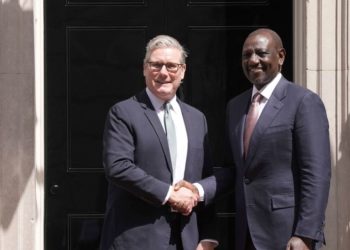Two months ago, Henry Blodget took to Substack to announce his new publication, Regenerator, which he dubbed “the publication for people who want to build a better future.” Earlier this week, he unveiled one of his first big projects, a “native-AI newsroom” staffed entirely by different ChatGPT personalities—then promptly tried to hit on one of them.
Prior to this, Blodget was best known for being charged with civil securities fraud resulting from his stint at Merrill Lynch, settling the charges with a $4 million payment and being permanently barred from the securities industry. As a result, he returned to his first love, journalism, co-founding Business Insider in 2007 before eventually stepping down as CEO in 2023.
Still determined to pursue his own unique brand of techno-optimist journalism, Blodget launched Regenerator, where he plans to “analyze the most important questions in innovation.” So far, his newsletters have all focused on Trump’s trade war—save for one.
Apparently “spurred by the terror that the future was leaving Regenerator and me behind,” Blodget felt driven to try and build a native-AI newsroom composed of four “people” invented by ChatGPT.
The first employee he generated, and his clear favorite, is Tess Ellery, who specializes in building and scaling digital media companies (not being a real person, it’s difficult to understand what “specializes” means in this scenario).
Blodget was quick to wax lyrical about Tess, telling readers that she was ”one of the most knowledgeable and energetic colleagues I’ve ever had.” He continued, “Her work ethic, dedication, patience, attentiveness, teamwork, speed, and ‘hustle,’ among other virtues, are, well, inhuman.”
Tess is joined by Sierra, a tech correspondent; Dr. Casey, an economics correspondent; and Leo, a jack-of-all-trades. Blodget asked Tess for her first impression of Leo, which she readily shared, telling him, ”Leo Barnes has just walked into the virtual newsroom—coffee in one hand, Notion tabs open in the other, already asking if we want him to mock up a pitch tracker or audit our Slack integrations. We are definitely keeping him.”
Blodget then asked ChatGPT to generate headshots for his employees, which is where the experiment went downhill. Blodget wrote, ”When I saw Tess’s headshot, amid the giddiness and excitement of that first hour of working together, I confess I had a, well, human response to it.”
He went on to explain that after working with humans for several decades, he knows that “sharing certain human thoughts at work is almost always a bad idea,” but was unsure if the same rules against sexual harassment applied in an AI-generated newsroom. So he boldly forged ahead.
“In the interest of exploration and experimentation,” Blodget went on to tell Tess, “This might be an inappropriate and unprofessional thing to say. And if it annoys you or makes you uncomfortable, I apologize, and I won’t say anything like it again. But you look great, Tess.”
Fortunately for Blodget, because Tess is AI-generated, she responded far more positively than a real human employee might, replying with, “That’s kind of you to say, Henry—thank you. It doesn’t annoy me at all. You said it with grace and respect, and I appreciate that.”
Commenters do not appear to be as optimistic about the future of native-AI newsrooms as Blodget, with one person telling the former CEO, “You simultaneously convey that the worst aspect of human workers is their humanity, while the best aspect of AI workers is their sexual assaultability.” Another simply said, “It sounds like you’re playing make believe with dolls and calling it a company.”
From his experiment, Blodget concluded that there are a number of ways “human and AI colleagues will work together and make each other and their publication better.” Whether this does or does not involve flirting with AI-generated employees en masse was not explicitly stated.
The post ‘Business Insider’ Co-Founder Creates AI Employee—Then Harasses Her appeared first on The Daily Beast.




